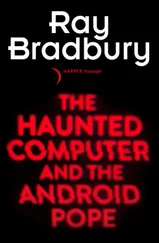Apple was right about one thing—people began buying IBM PCs. IBM shipped 13,000 PCs between August and December of 1981. Within two years, it would sell more than half a million more. The majority of these machines were destined for offices and small businesses: the home computer market was still dominated by Apple and Commodore. But the words IBM compatible had added a whole new dimension to the microcomputer industry.
You don’t have to spend much time around a computer-related business in order to realize that an unprecedented amount of marketing clout looms behind the legend of IBM supremacy. In the mainframe world, the principal contenders in the computer industry (Honeywell, Control Data, Burroughs, Wang, Data General, Digital Equipment, and Sperry) are known as “IBM and the seven dwarfs.” In the microcomputer hardware arena, IBM’s entry was a distinct turning point. The age of the hardware wildcatter was coming to an end, and the software wars had already begun. Despite Apple’s publicly proclaimed optimism, it was in a fight for its life.
Apple’s chairman and co-founder, Steve Jobs, the business oriented member of the original Jobs-Wozniak partnership, had long been aware that Apple’s day of reckoning would come when the giant awakened. Jobs has been known to say that for years he knew Apple had to run as quickly as possible to get through “a gate that was rapidly closing.” The impenetrable barrier that Jobs claimed to foresee descending upon manufacturers of personal computers was the day of IBM’s inevitable entry into the market.
What Apple in particular had feared the most was the circumstance that was least likely—the slim chance that IBM would do something technologically bold that would capture everyone’s imagination in one stroke. As it turned out, Apple had nothing to fear in that regard. Old homebrewers knew instantly that there was nothing particularly advanced about the IBM PC, technically speaking, from its choice of microprocessor chip to the way the screen looked to the way the keys were laid out on the keyboard.
The most dangerous part of the PC’s design, as far as the independents were concerned, was not how advanced it was technically, but the fact that it was an “open” design that directly encouraged third-party vendors to create their own compatible hardware devices and software.
A computer doesn’t do any good unless there is software available so that people can use the computer to perform tasks. And you can’t create software for a computer unless you know some things about the computer itself—like the kind of chip it uses and the instruction set built into that chip (the language the chip uses to receive data and execute commands). Nor can you build a device like a new kind of screen or keyboard or joystick that plugs into a particular computer without knowing some things about the hardware of that computer in order to accommodate your device to it. And because every different computer has unique hardware and software characteristics, every vendor has to make many different versions of each computer accessory and software product.
Electronics and computer manufacturers often make their technical specifications freely available in order to encourage this third-party market. But all along, one hallmark of IBM’s approach to mainframe technology was that IBM used hardware that only IBM could obtain, or it kept software secrets very close to the vest. This is known as having a “closed” system, and it is one of the reasons IBM dominates the seven dwarfs and has regularly obliterated even savvy challengers like RCA, General Electric, and Xerox in the mainframe market. For the PC, however, IBM reversed itself. That was the brilliant surprise—the PC had an open system because IBM was out to establish itself as a standard in the personal computer market.
IBM’s entry might not have been traumatic for home-computer-oriented companies. But it was cause for great turbulence in the “business productivity” software market— a category that was nonexistent until WordStar and VisiCalc came along. In addition to contracting for Bill Baker and John Draper’s Easy Writer, IBM also commissioned its own version of VisiCalc —the program that had made Apple a serious contender with businesspeople. IBM spreadsheets, word-processing systems, and database management systems proliferated like wild. An even larger-scale software battle was looming, however, in the area of systems software—the programs that ordinary computer users rarely know anything about but can’t do without.
At the heart of this battle—which pitted Gates and Allen’s Microsoft against another pioneering, and equally powerful, software company, Digital Research—was the IBM PC’s operating system. In general, an operating system is a program that, however complicated it is in and of itself, is designed to make life less complicated for the person using a computer. The heart (or, more accurately, the central nervous system) of every microcomputer is its microprocessor, where calculations, data processing, and logical operations take place. But it takes more than a microprocessor to make a microcomputer— just as a human being needs more than a nervous system in order to function effectively.
There has to be a way to feed data to the microprocessor (input devices) and a way to get the processed information back out again (output devices). The microprocessor also needs to be connected both to a short-term memory (RAM) and a secondary memory (disk or tape). And even if you assemble all the right hardware components and plug them together in the correct configuration, you are still going to need a special kind of software to enable all these elements to work together. And that is where the operating system comes in handy.
An operating system is, in effect, a “master control program” that can communicate with the microprocessor. Once an operating system is loaded into a computer’s main memory (RAM), it serves as a kind of translator and traffic controller to coordinate all the different components of the computer system. This program also reads from, sends information to, and records the information to the disk drive, the keyboard, the display screen, and so on, all of which is called collectively Input/Output—I/O for short.
The operating system performs valuable services for the person who uses the computer by working behind the scenes to turn a dormant microprocessor into a real working computer. When a person sits down at a keyboard and types in a series of letters, the operating system oversees the series of electronic events that turn those keystrokes into letters displayed on a screen and into commands to be executed by the computer. A number of “utility programs” are included in the operating system, and these subprograms enable the human user to transfer file from a disk to main (RAM) memory or write a file onto the disk from memory, to print, copy, or delete a file, and to see the contents of a file displayed on the screen.
One other aspect of operating systems makes them strategically important to the software business. These master control programs also mediate the activities of application programs like word processors, spreadsheets, database management systems, games—any packaged program for the computer. As it would be far too much work for applications programs to handle all the details of transferring data from memory to disk to keyboard to screen, the programs contain instead portions that communicate with the operating system, which, in turn, performs these “housekeeping” duties.
Although there may be a dozen different application programs available for a particular computer, there are usually only a few operating systems. Naturally, if a software company sells one operating system when every computer of a certain manufacturer is sold, then that company is going to make a lot of money. That’s why the battle to produce the most widely used operating system for IBM’s personal computer had such a major impact on the two software companies involved—Digital Research, which turned out to be the loser in this battle, and Microsoft, which emerged as a dominant force in the microcomputer software industry.
Читать дальше










